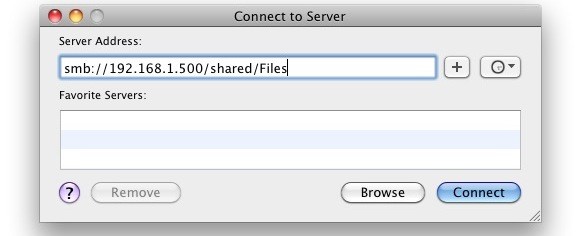
To find and delete old backups, launch iTunes, select the Settings menu item and click on the Devices icon. It is therefore advisable to empty your old backups on iphone, ipods and ipad.
#MAC NETWORK DRIVE FREE SPACE UPDATE#
If you regularly update the firmware and often sync your iPhone with iTunes, then the application creates dozens of backup copies of your device, and they often eat off a significant amount, of gigabytes of disk space.

If you have some kind of personal dislike for Dropbox- dozens of other similar services are at your service, the most popular ones are Google Drive, Microsoft SkyDrive, Yandex.Disk. If you use the Dropbox service, you know that even in a free version this cloud storage service provides 2 gigabytes of space, and that means you can release just as much on your hard drive. To do this, you can use the “Selective synchronization” function, which allows you to delete content sent to the cloud from the hard drive. To do this, go to the Preferences -> Advanced menu and specify the desired folders. Take advantage of the cloud-based data storage service.
#MAC NETWORK DRIVE FREE SPACE MP4#
Often it happens that you, for example, download a new film or the next season of the series, compress it into the MP4 format, fill it with an iPhone, view it on the road, and the full-size original still lives on your hard drive. It is extremely rare that you then revise the same series on a large computer, so after compressing the movies to the format of a mobile device – remove heavy-weight originals. Remove unused copies of movies and videos.TIP: It is always smart to have monitoring tools (Like HP SiteScope or HP Operations Manager for example) that will control critical points in your system and send you alerts when for example disk free space drops a certain level.Every time you view photos or documents sent to you by e-mail, Mail keeps these files in the Mail Downloads folder. If you do not accept a large number of e-mail attachments, this folder will remain almost empty, but if you regularly exchange files via email – it will quickly become “fat”. To fix this, we do not need much time and effort. It is enough to call the context menu of the Finder, select the item “Go To Folder” in it and type ~/Library/Mail Downloads and clean out all the accumulated trash. At the same time, there is a chance that the download folder from the network takes a decent amount of megaand even a gigabyte. Look there, save everything you need, and erase the rest with a clean conscience. For example, we can use MS SQL Database and create table DiskFreeSpace based on resultset type name ( Report.DiskSpaceInfo ) where we can record the resultset and use MS SQL Reporting Services to show the results collected over a certain period of time. Type Name of resultset gives us a possibility to further expend the use of resultset. Report.DiskSpaceInfo Type Name for Get-DiskFreeSpace CmdLet resultset Get-DiskFreeSpace -client "OK" -solution "FIN" | Get-Member So if we call PowerShell Get-Member CmdLet to get the type of resultset for Get-DiskFreeSpace CmdLet we will get Report.DiskSpaceInfo type and not standard PowerShell PSObject type. Notice the name of the resultset ( Report.DiskSpaceInfo).

Write-Output $obj Type Name Of The Resultset Objects $obj = New-Object -TypeName PSObject -Property $properties Get-CimInstance -Class CIM_LogicalDisk -ComputerName (Get-Content -Path 'C:\Temp\Servers.txt') | Select-Object Space(GB)" Expression= We use the CIM_LogicalDisk CIM Class combined with the ComputerName parameter that has been fed from the text file with the list of servers. We basically load the content of the text file using Get-Content CmdLet and PowerShell will go through the list and run the same command as in the previous solution for each server on the list. Properties of Win32_LogicalDisk WMI Class Solution 2 – Get Disk Size And Disk Free Space For The List Of Servers (Remote Computers)įor the list of computers, we can use the same calls as for the previous solution only to use the ComputerName parameter and add the list of servers as a txt file.Ĭreate the list of servers in the text file and save in, for example, C:\Temp folder.


 0 kommentar(er)
0 kommentar(er)
